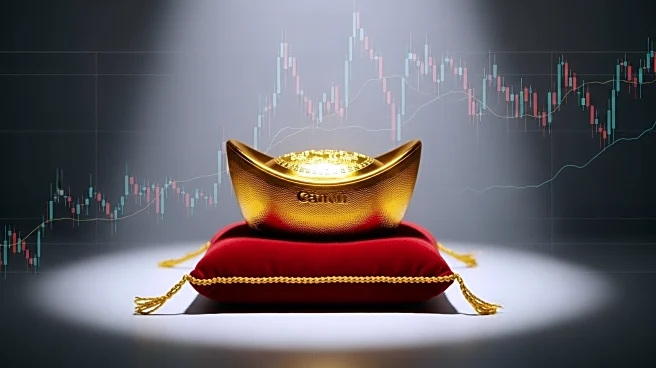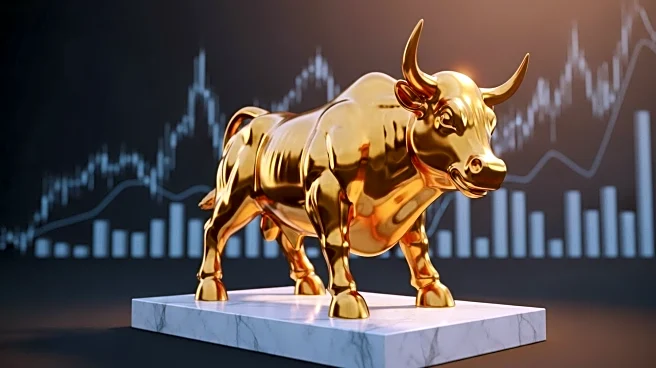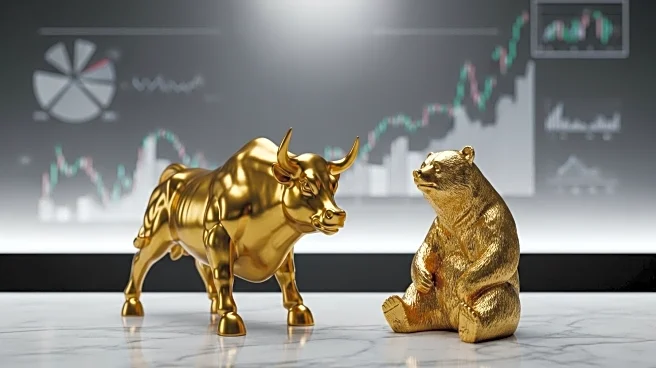What is the story about?
What's Happening?
Gold prices have surged past the $3,900-per-ounce mark for the first time, driven by increased demand for safe-haven assets amid the ongoing U.S. government shutdown and broader economic uncertainties. The rise in gold prices is also supported by expectations of further Federal Reserve rate cuts. Spot gold increased by 1.3% to $3,938.43 per ounce, with U.S. gold futures for December delivery climbing 1.4% to $3,962.70. The current rally in gold is characterized by strong central bank buying, increased demand for gold-backed exchange-traded funds, and a weaker dollar. Investors are seeking gold as a hedge against rising trade and geopolitical tensions.
Why It's Important?
The surge in gold prices highlights the market's response to economic instability and the potential for further monetary easing by the Federal Reserve. As a non-yielding asset, gold benefits from low-interest-rate environments and economic uncertainties. The current rally suggests a shift in investor sentiment towards safer assets amid fears of prolonged government shutdowns and economic slowdowns. This trend could impact various stakeholders, including investors, central banks, and policymakers, as they navigate the challenges posed by economic volatility and geopolitical tensions.
What's Next?
Investors are anticipating a 25-basis-point cut at the upcoming Federal Reserve meeting, with an additional cut expected in December. This monetary policy direction could further influence gold prices, potentially driving them higher. Analysts, such as those from UBS, predict that gold could reach $4,200 per ounce by the end of the year. The ongoing government shutdown and its resolution will also play a critical role in shaping market dynamics and investor confidence in the coming months.
Beyond the Headlines
The current gold rally, driven by long-term central bank buying and steady investors, suggests that any potential pullback might be less severe than expected. This scenario presents opportunities for investors to buy on dips while the rally maintains its momentum. The situation underscores the broader implications of economic policy decisions and geopolitical developments on global financial markets.
AI Generated Content
Do you find this article useful?













